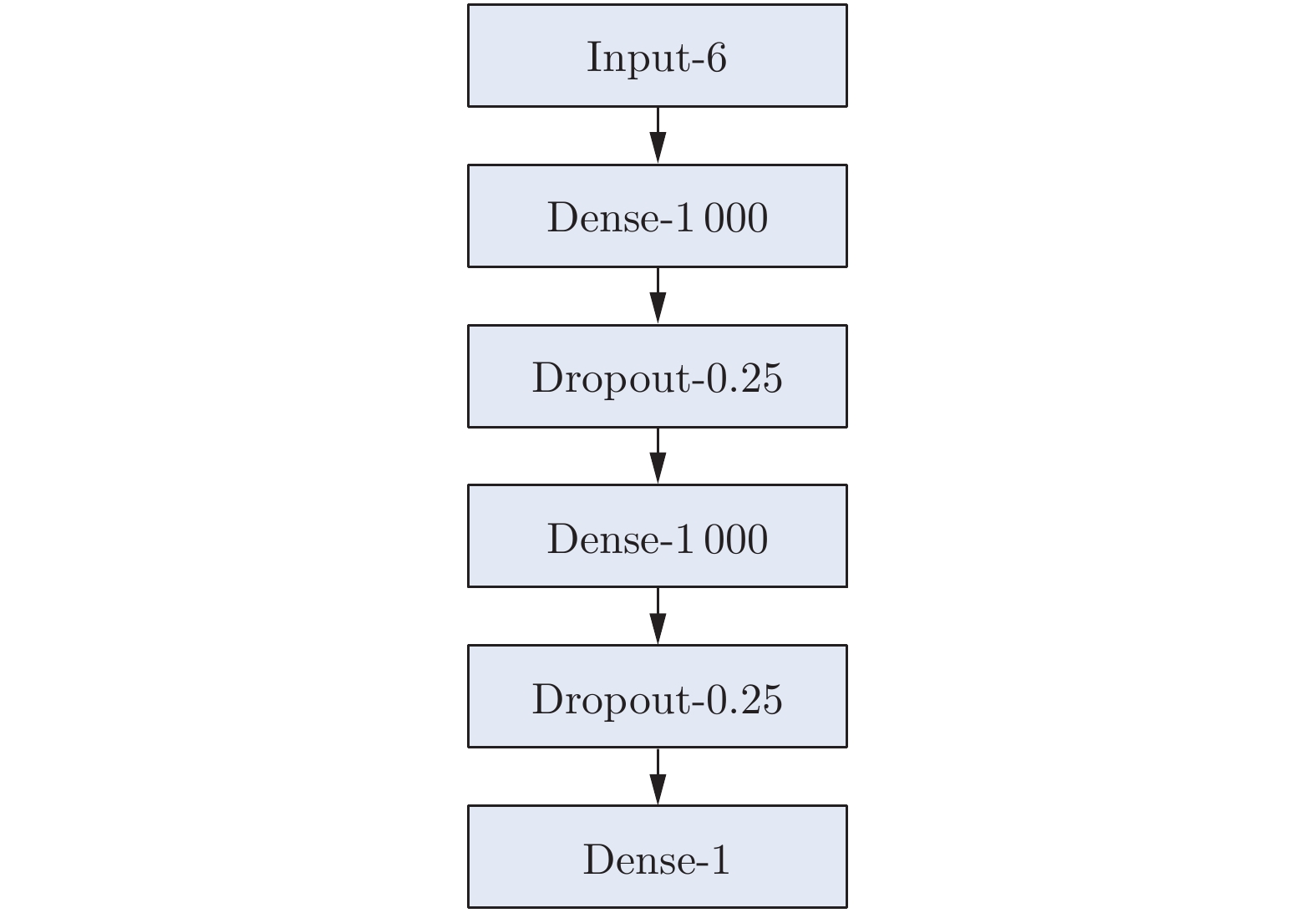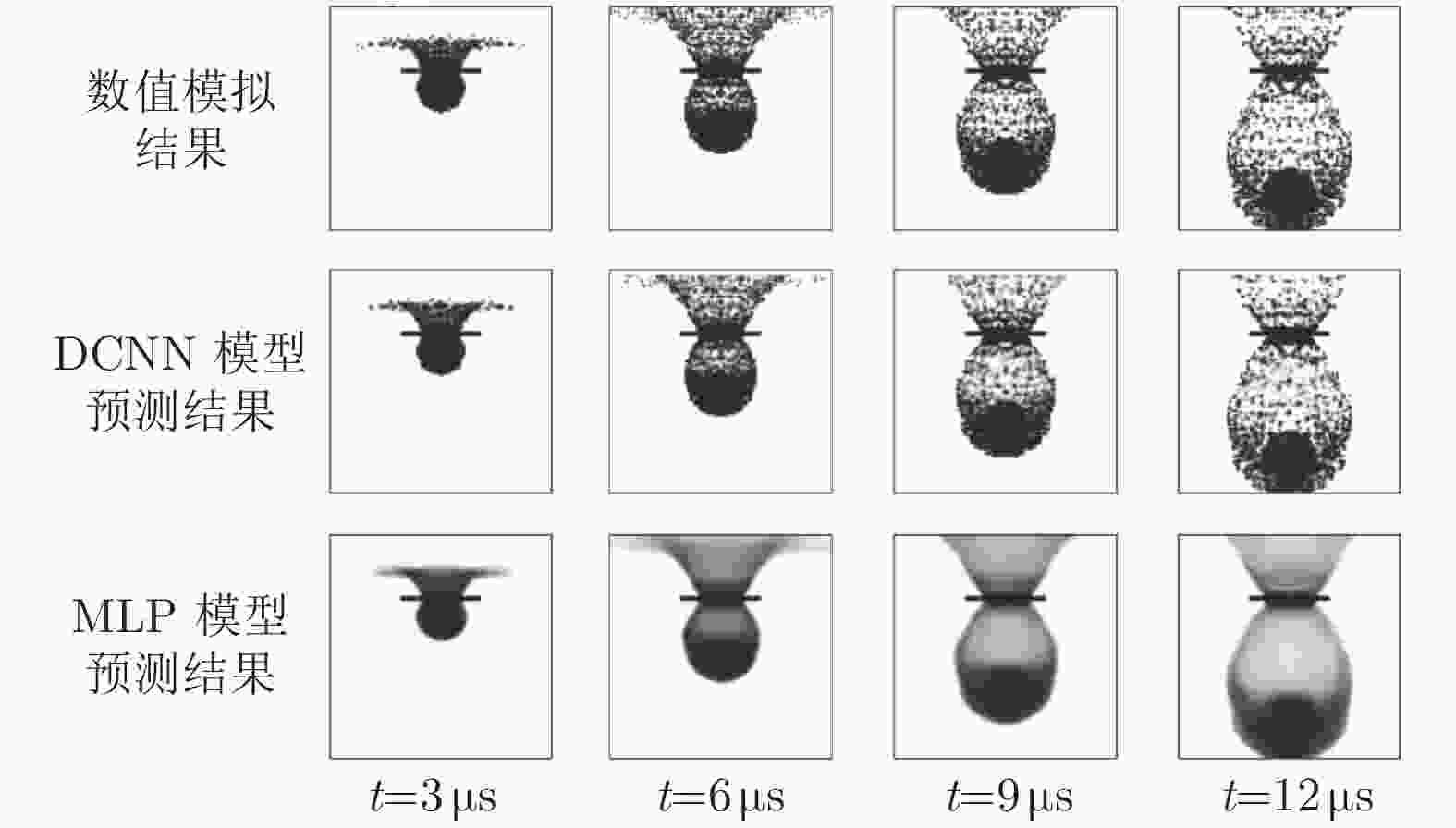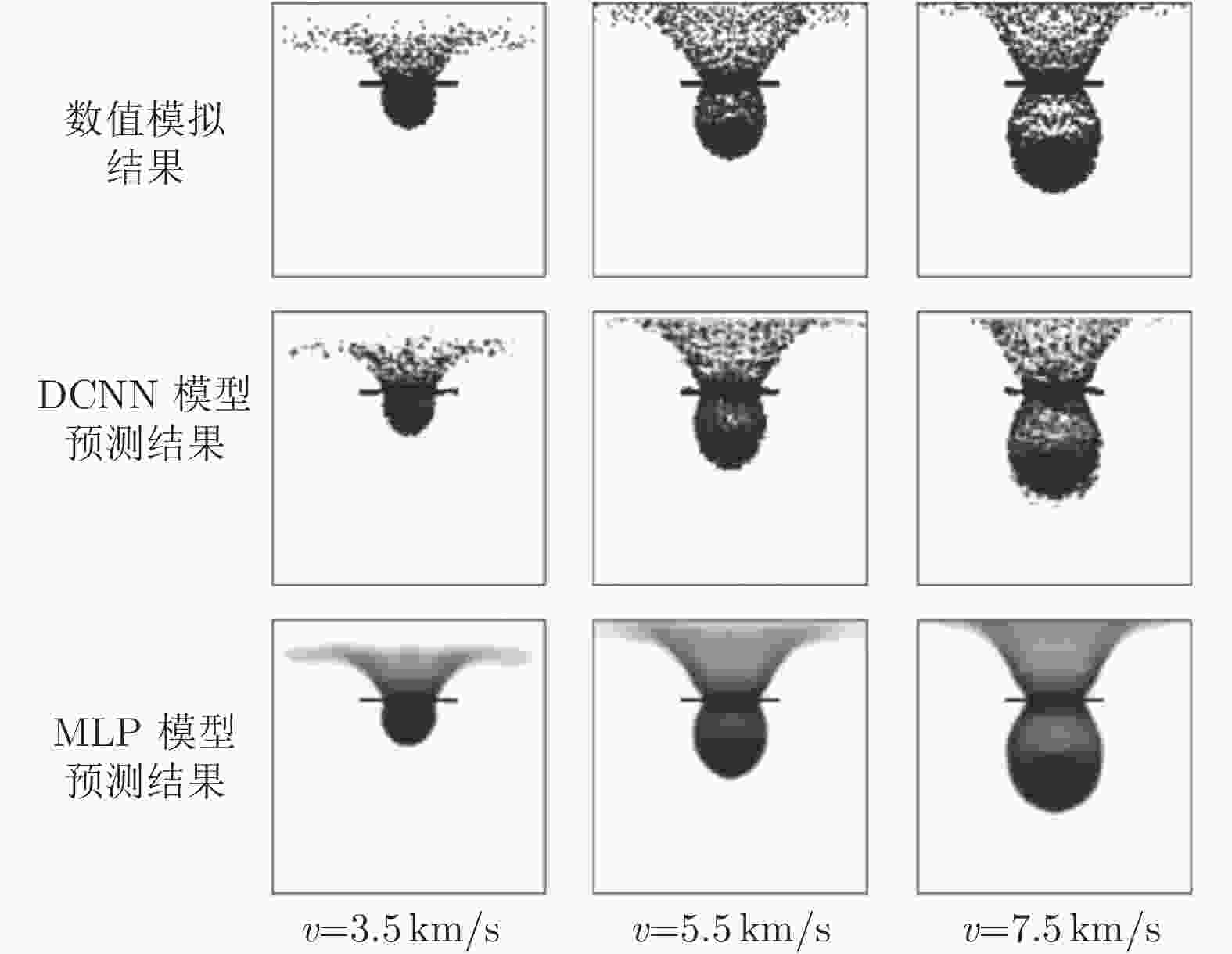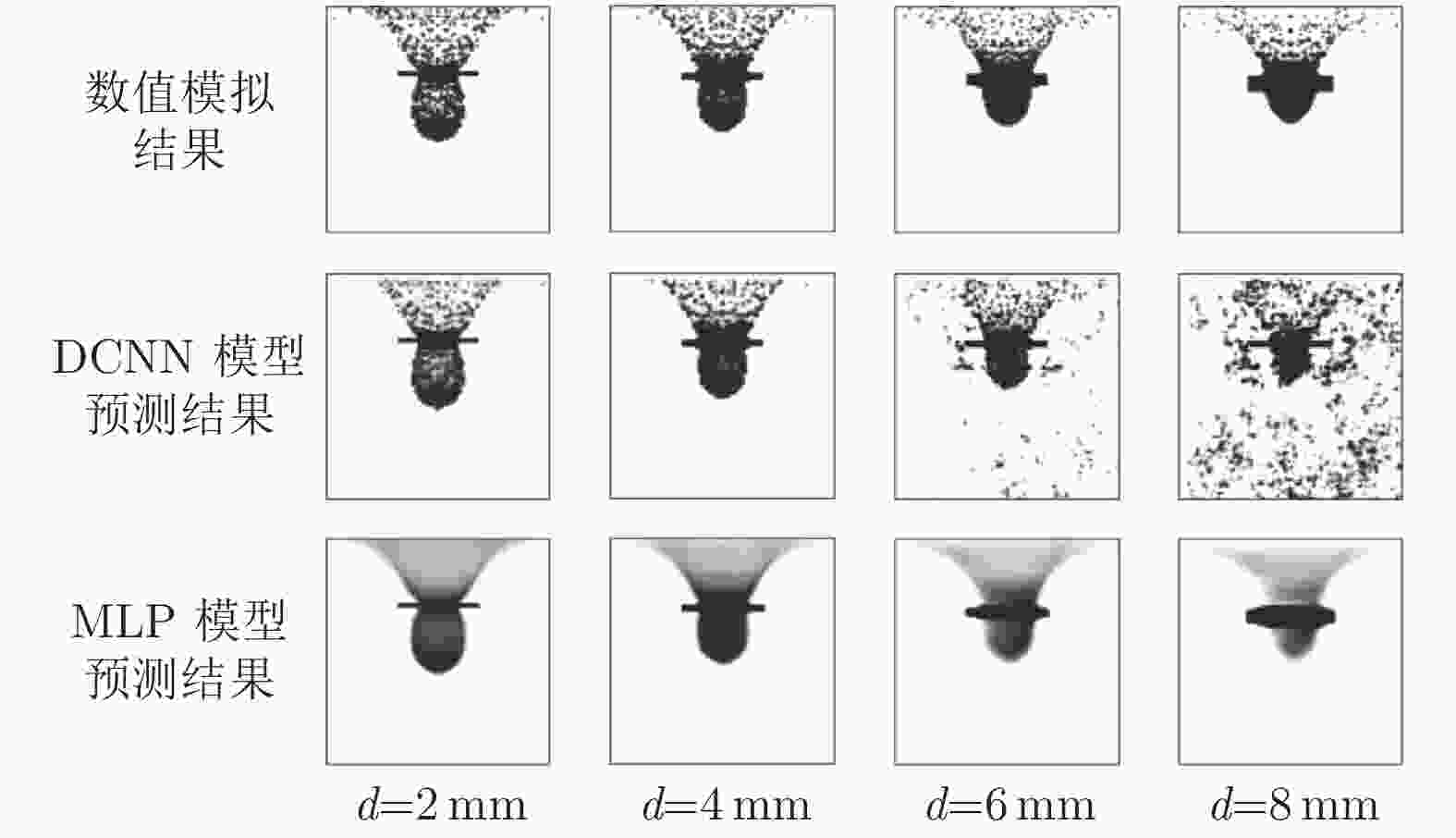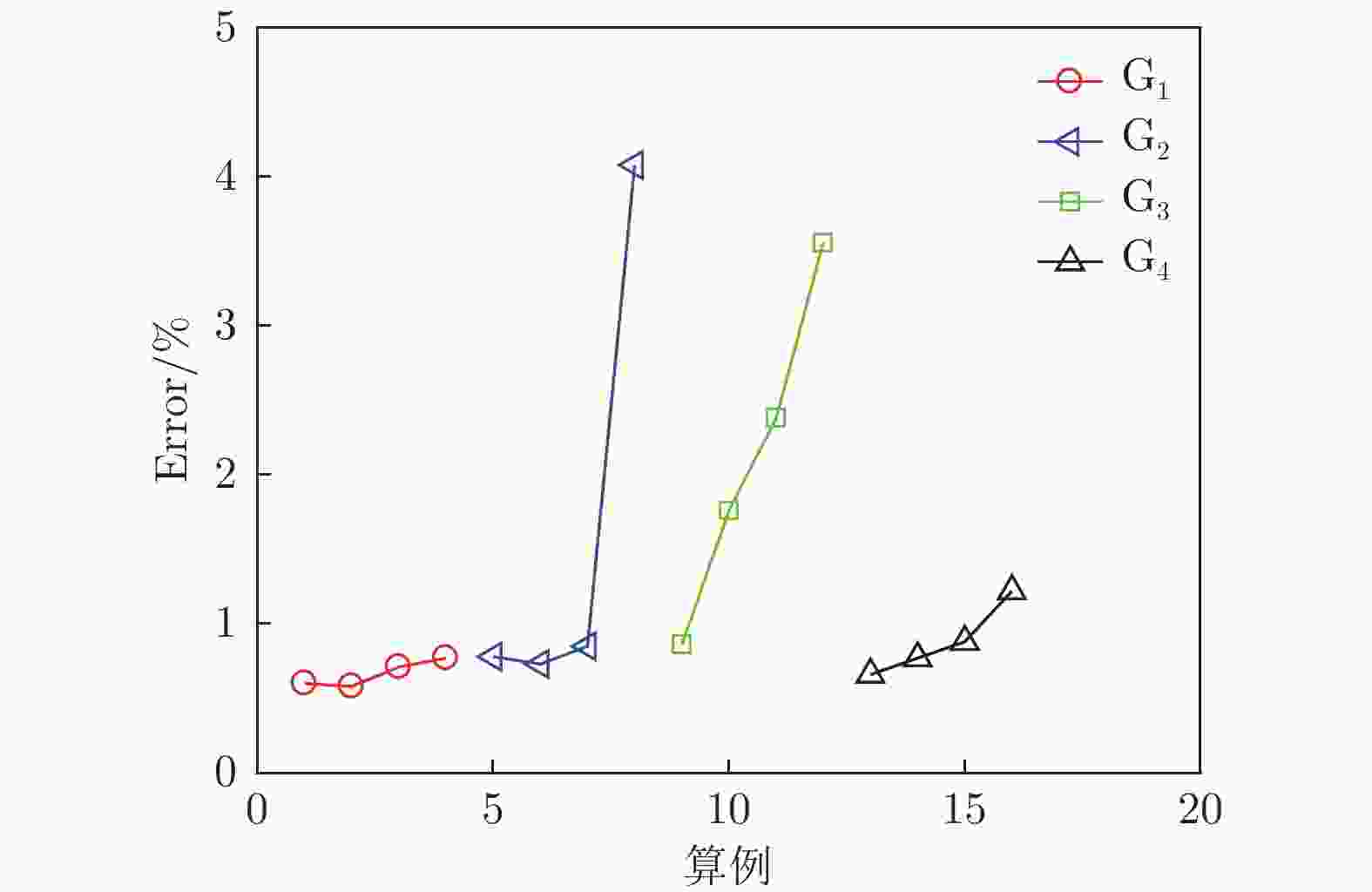Predict the mass distribution of hypervelocity impact debris using deep learning
-
摘要: 在航天器防护构型设计中,快速预测空间碎片超高速碰撞防护屏产生碎片云的质量分布及其变化规律具有重要意义。本文初步探索了采用深度学习方法预测超高速碰撞碎片云的二维质量分布及其变化过程。训练数据来自约2000个弹丸(铝球)超高速正碰撞靶板(铝板)的光滑粒子流体动力学数值模拟结果,共考虑4个变量(弹丸速度范围3~8 km/s、弹丸半径范围2~8 mm、靶板厚度范围1~4 mm以及观测时间范围1~12 μs)。系统比较了反卷积模型和多层感知机两种模型的预测效果,重点考察了模型的外推能力(应用于训练参数范围之外)。研究结果表明:在训练参数范围内两种模型的预测精度都很高;反卷积模型能够捕捉到碎片云质量分布的颗粒特征,但外推能力较差;多层感知机模型将碎片云中的质量进行了局部均匀化处理,具有较强的外推能力;多层感知机模型通过学习1~12 μs的碎片云质量分布,能够以一定精度预测24 μs时刻的质量分布;反卷积模型的预测时间为毫秒量级,多层感知机模型的预测时间为秒量级。Abstract: Efficiently predicting the evolution of hypervelocity impact(HVI) debris is crucial in the design of spacecraft protective structures. To this end two deep learning models, namely the de-convolutional architecture and the multi-layer perceptron architecture, are compared. Training data come from smoothed particle hydrodynamics (SPH) simulations. Deep learning models include four controllable labels, namely the projectile velocity (range 3–8 km/s) , the radius (range 2–8 mm), target plate thickness (range 1–4 mm) and time instant (range 1–12 μs). It is found that the two architectures are both accurate if the labels are confined within the range of training data. Out of the training data labels range, the de-convolutional architecture extrapolates poorly, though it can capture the granular property of the HVI debris. At the same time, the multi-layer perceptron architecture homogenizes the local mass distribution in the HVI debris and achieves much better extrapolation capability. By learning the mass distribution between time 1 μs and 12 μs, the multi-layer perceptron architecture can predict the mass distribution at time 24 μs with reasonable accuracy. Prediction time of the de-convolutional architecture is several milliseconds and prediction time of the multi-layer perceptron architecture is several seconds.
-
Key words:
- HVI debris /
- deep learning /
- multi-layer perceptron
-
表 1 外推算例参数设计
Table 1. Input parameters design for model extrapolation
v/(km·s–1) r/mm d/mm t/μs G1 8,9,10,11 8 1 5 G2 5 3,6,9,12 1 10 G3 5 5 2,4,6,8 10 G4 3 8 1 12,16,20,24 -
[1] WHIPPLE F L. Meteorites and space travel[J]. The Astronomical Journal,1947,52:132-137. doi: 10.1086/106009 [2] 郑建东,龚自正,席爽,等. 基于弹丸最大碎片理论的碎片云模型[J]. 航天器环境工程,2012,29(4):397-400. doi: 10.3969/j.issn.1673-1379.2012.04.007ZHENG J D,GONG Z Z,XI S,et al. A new debris cloud model based on the largest fragment theory[J]. Spacecraft Environment Engineering,2012,29(4):397-400. doi: 10.3969/j.issn.1673-1379.2012.04.007 [3] 邸德宁,陈小伟,文肯,等. 超高速碰撞产生的碎片云研究进展[J]. 兵工学报,2018,39(10):2016-2047. doi: 10.3969/j.issn.1000-1093.2018.10.018DI D N,CHEN X W,WEN K,et al. A review on the study of debris cloud produced by normal hypervelocity impact upon a thin plate[J]. Acta Armamentarii,2018,39(10):2016-2047. doi: 10.3969/j.issn.1000-1093.2018.10.018 [4] SCHÄFER F K. An engineering fragmentation model for the impact of spherical projectiles on thin metallic plates[J]. International Journal of Impact Engineering,2006,33(1-12):745-762. doi: 10.1016/j.ijimpeng.2006.09.067 [5] HUANG J,MA Z X,REN L S,et al. A new engineering model of debris cloud produced by hypervelocity impact[J]. International Journal of Impact Engineering,2013,56:32-39. doi: 10.1016/j.ijimpeng.2012.07.003 [6] MA Z X, HUANG J, LIANG S C. The technology of modeling debris cloud produced by hypervelocity impact[C]//Proc of the 6th European Conference on Space Debris. 2013. [7] RYAN S,THALER S,KANDANAARACHCHI S. Machine learning methods for predicting the outcome of hypervelo-city impact events[J]. Expert Systems With Applications,2016,45:23-39. doi: 10.1016/j.eswa.2015.09.038 [8] RYAN S,KANDANAARACHCHI S,SMITH-MILES K. Support vector machines for characterising Whipple shield performance[J]. Procedia Engineering,2015,103:522-529. doi: 10.1016/j.proeng.2015.04.068 [9] RYAN S,THALER S. Artificial neural networks for characterising Whipple shield performance[J]. International Journal of Impact Engineering,2013,56:61-70. doi: 10.1016/j.ijimpeng.2012.10.011 [10] HOSSEINI M,ABBAS H. Neural network approach for estimation of hole-diameter in thin plates perforated by sphe-rical projectiles[J]. Thin-Walled Structures,2008,46(6):592-601. doi: 10.1016/j.tws.2008.01.012 [11] 刘源,庞宝君. 基于贝叶斯正则化BP神经网络的铝平板超高速撞击损伤模式识别[J]. 振动与冲击,2016,35(12):22-27. doi: 10.13465/j.cnki.jvs.2016.12.004LIU Y,PANG B J. Hypervelocity impact damage pattern recognition on aluminum plates based on Bayesian Regula-rization BP neural network[J]. Journal of Vibration and Shock,2016,35(12):22-27. doi: 10.13465/j.cnki.jvs.2016.12.004 [12] KINGMA D P, WELLING M. Auto-encoding variational Bayes[J]. arXiv preprint: 1312.6114, 2013. doi: 10.48550/arXiv.1312.6114 [13] SOHN K, LEE H L, YAN X C. Learning structured output representation using deep conditional generative models[C]//Proc of the International Conference on Neural Information Processing Systems. 2015. [14] 周浩,李毅,张浩,等. 基于CVAE的超高速碰撞碎片云运动过程的快速预测技术[J]. 实验流体力学,2021,35(5):40-46. doi: 10.11729/syltlx20200058ZHOU H,LI Y,ZHANG H,et al. Evolution prediction of HVI debris based on CVAE model[J]. Journal of Experiments in Fluid Mechanics,2021,35(5):40-46. doi: 10.11729/syltlx20200058 [15] 李毅, 柳森, 陈鸿, 等. 并行SPH仿真软件PTS的开发与应用[C]//第二届全国超高速碰撞学术会议论文集. 2016.LI Y, LIU S, CHEN H, et al. Develop and application of the parallel SPH software PTS[C]//Proc of the 2nd National Symposium on HVI. 2016. [16] BHOWMIK D, GAO S, YOUNG M T, et al. Deep clustering of protein folding simulations[J]. BMC Bioinformatics, 2018, 19(Suppl 18): 484. doi: 10.1186/s12859-018-2507-5 [17] IOFFE S, SZEGEDY C. Batch normalization: accelerating deep network training by reducing internal covariate shift[C]// Proceedings of the 32th International Conference on Machine Learning. 2015. [18] HORNIK K,STINCHCOMBE M,WHITE H. Multilayer feed-forward networks are universal approximators[J]. Neural Networks,1989,2(5):359-366. doi: 10.1016/0893-6080(89)90020-8 [19] NITISH S,HINTON G,KRIZHEVSKY A,et al. Dropout: a simple way to prevent neural networks from overfitting[J]. Journal of Machine Learning Research,2014,15:1929-1958. [20] BAKER N,LU H J,ERLIKHMAN G,et al. Deep convolu-tional networks do not classify based on global object shape[J]. PLoS Computational Biology,2018,14(12):e1006613. doi: 10.1371/journal.pcbi.1006613 [21] GEIRHOS R, RUBISCH P, MICHAELIS C, et al. ImageNet-trained CNNs are biased towards texture; increas-ing shape bias improves accuracy and robustness[C]// Proc of the International Conference on Learning Representations. 2019. doi: 10.48550/arXiv.1811.12231 -







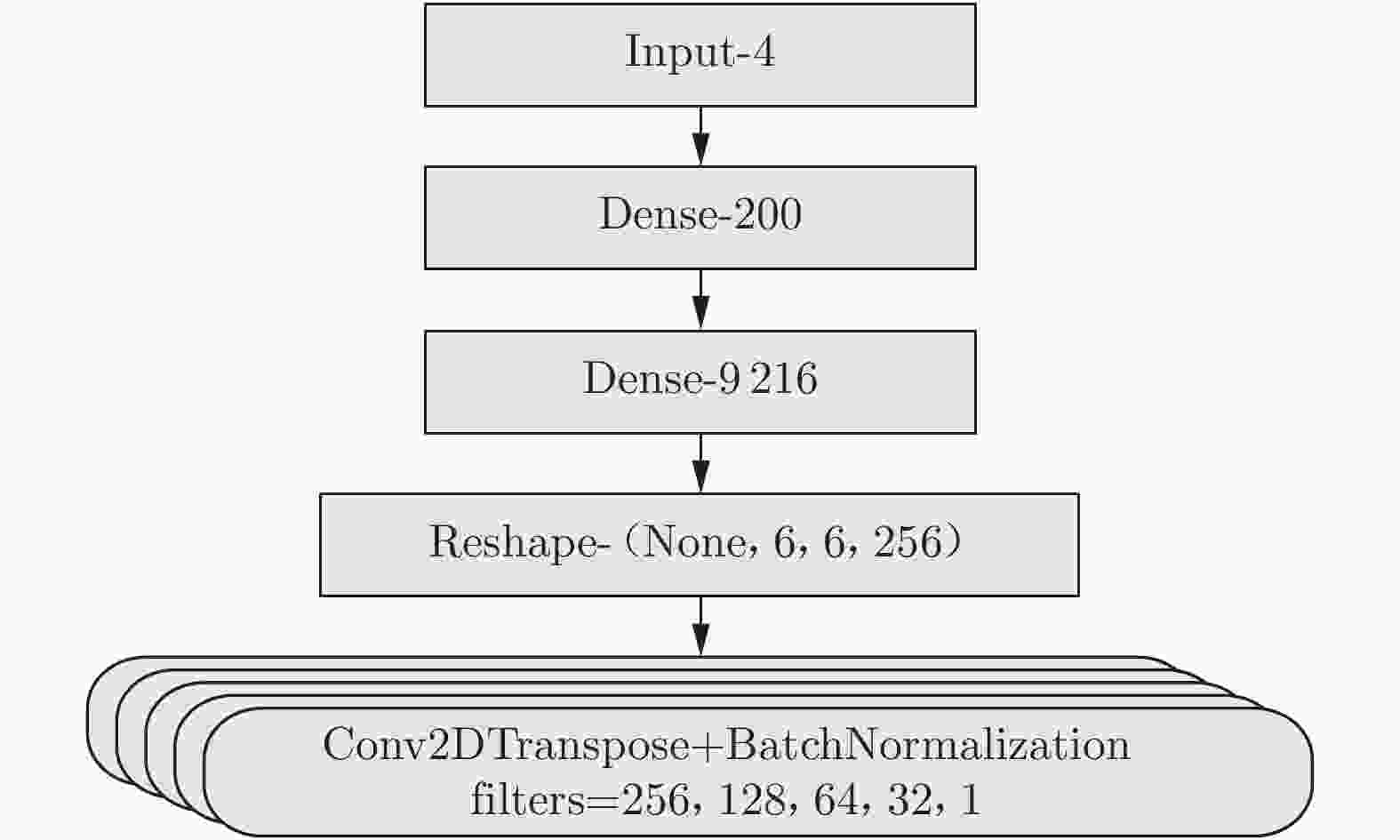
 下载:
下载:
